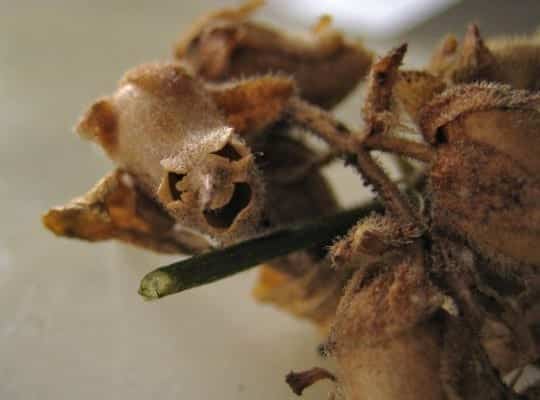Snapdragon flowers are truly beautiful, but they don’t look like what you’d expect forever, when things dry up these interesting plants seem to turn into tiny skulls. As their seed pods die, they change, and well, some people love it and others think it’s a bit creepy.
You see, as the seed pods for these amazing plants dry out they end up shriveling and looking like tiny human skulls which you can see below. This while a little eerie, I feel is quite beautiful for a lot of reasons. Actually, according to The Metro, if you break one off and squeeze it a bit, you can even make the ‘skull’ open and close its mouth.
i dont really like Flowers but i want a #SnapdragonFlower !!!!! 😍😍 #MostBeautifulFlower pic.twitter.com/nvxc2knc3q
— Layla Rose (@oOLayla_RoseOo) April 24, 2014
While some people say this is the skull of the dragon since the plant is called the ‘snapdragon’ that in itself is something many people don’t seem to agree on because the skulls do often end up looking quite human-like. It was noted by Kuriositas that ancient cultures thought the snapdragon held supernatural powers and perhaps the presence of these ‘skulls’ had something to do with that. I for one find them to be quite fascinating when it comes to things of the plant world.
Now, the scientific name for this plant is known as Antirrhinum and chances are you’ve seen it before whether you’ve noticed it or not. Snapdragons come in lots of colors and well, they’re usually quite vibrant while blooming. They’re also not too hard to keep growing and don’t require too much maintenance. They offer a lot to look at whether they’re blooming or drying out as you can see below their flowers are truly gorgeous.
Reekoscience wrote as follows about these unique beauties:
The Snapdragon flower (aka Antirrhinum or dragon flower) can be found in many household gardens and gets its name from its flower which resembles a dragon’s head (squeeze the snapdragon flower and the “dragon” mouth will open and close making it “talk”). Yet once the flower has died it leaves behind a seed pod with the macabre appearance of a human head.
The Snapdragons name (Antirrhinum) comes from the Greek words “anti,” meaning like, and “rhin,” meaning nose. Many years ago, people thought the plant possessed mystical powers and would place them around their homes to shield the house from curses and witches. In Victorian days, the flower was a symbol of deception, suspicion, and mystery. Legend has it that concealing a snapdragon in your clothes makes a person appear fascinating, gracious, and cordial. Today they are a favorite in gardens around Europe, United States, and North Africa because, well, they look like dragon heads!

(Picture: Ombrosoparacloucycle/Flickr)
To see more examples of the skulls these interesting plants bring forth take a look at the video below. What do you think about them? Are they as creepy as some tend to assume?

